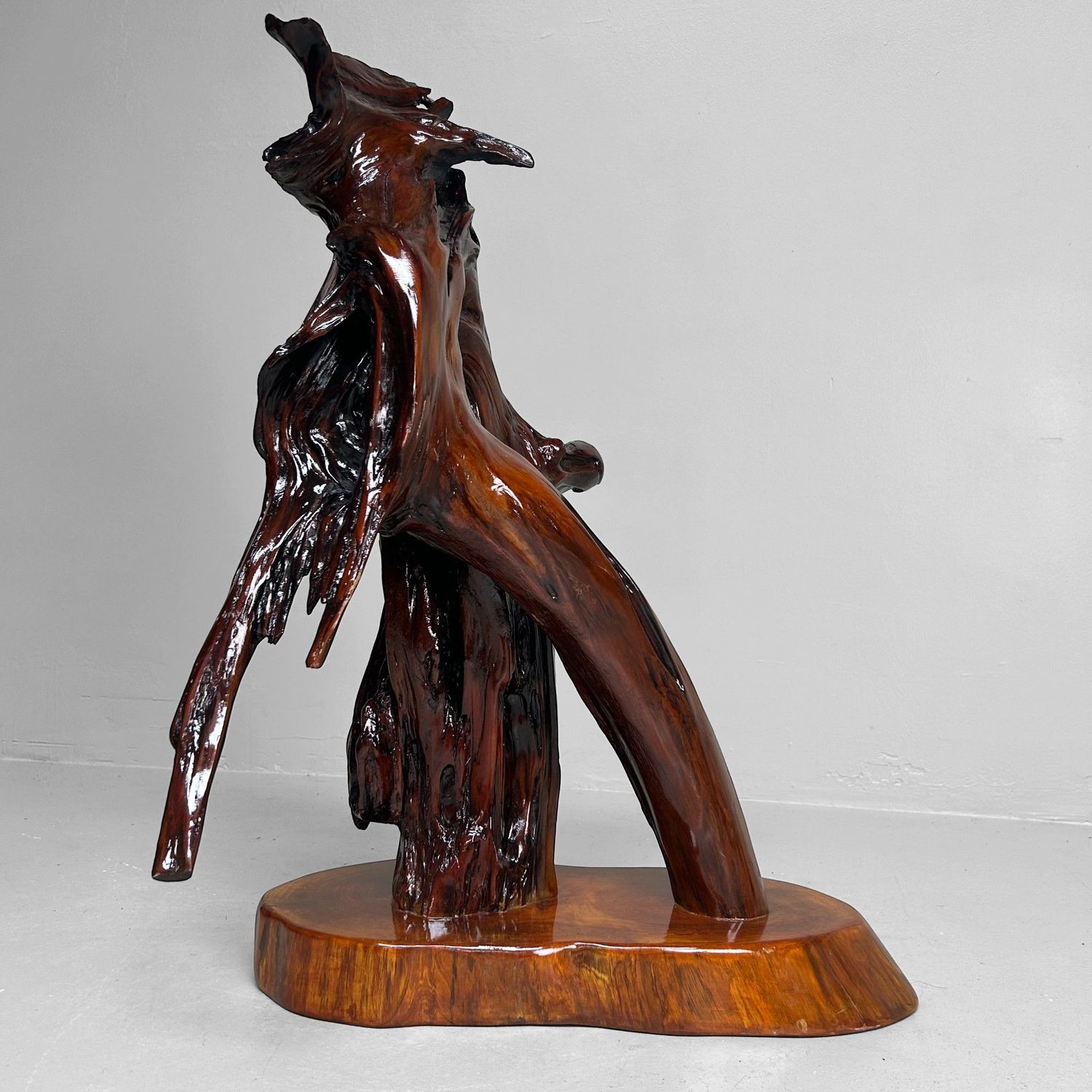Decorative Japanese Rootwood Display – Keyaki, 1970s
This sculptural piece, originating from Japan and dating back to the 1970s, is a striking example of Japanese aesthetics that embrace natural forms, impermanence, and asymmetry — the essence of the wabi-sabi philosophy.
Dimensions: height 72 cm, width 50 cm, depth 35 cm. Weight: 10 kg.
The piece is meticulously crafted from keyaki (欅) — Japanese zelkova — one of the most revered hardwoods in traditional Japanese woodworking. Keyaki is known for its deep golden to reddish-brown hue, natural satin sheen, and prominent, lively grain pattern. This piece has a bold, almost dynamic presence, with gnarled contours, cavities, and protrusions reminiscent of natural growth processes. The polished finish enhances the wood's depth and warmth, highlighting its organic character.
It is particularly well-suited as a base for bonsai displays, where it complements the natural aesthetic; as a foundation for ikebana arrangements, adding a strong and earthy element; in wabi-sabi interiors as a soulful accent; or in zen-inspired spaces to evoke a serene, contemplative atmosphere.
In Japan, such rootwood sculptures are traditionally displayed in the tokonoma (床の間) — an alcove in a reception room where art and nature converge. They symbolize the beauty of imperfection, the passage of time, and the unpredictable force of nature.
This unique piece creates a visual moment of stillness in minimalist interiors and brings a poetic sense of the outdoors into the home.











